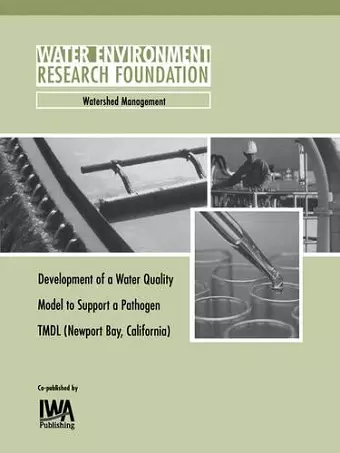Development of a Water Quality Model to Support Newport Bay, California TMDL
J A Soller author A W Olivieri author J F DeGeorge author S Grinbergs author J N S Eisenberg author
Format:Paperback
Publisher:IWA Publishing
Published:1st Feb '03
Currently unavailable, and unfortunately no date known when it will be back

Newport Bay (Orange County, California) is listed by the California State Water Resources Control Board (SWRCB) as a water quality limited receiving water body because of sporadic exceedances of the fecal coliform water quality objectives for body contact recreation. Consistent with federal and state requirements, a Total Maximum Daily Load (TMDL) is being implemented in the watershed. The fecal coliform TMDL in Newport Bay is a phased approach for understanding and controlling the microbiological water quality in the to ensure the reasonable protection of the Bay?s beneficial uses. An important initial step within that TMDL was to assess the impairment of the body contact recreation beneficial use (REC-1) of Newport Bay receiving waters through characterizing the risk of illness associated with REC-1 exposure. A health risk assessment investigation was developed to characterize that risk. The health risk assessment investigation involved the integration of a population based model of disease transmission, a water quality modeling component necessary for estimating pathogen dose as part of the exposure assessment, and site-specific population use and receiving water data collection. The Water Environment Research Foundation funded the water quality modeling component of the health risk assessment investigation, which is the focus of this report. Also provided within this report is an overview of the health risk assessment methodology, a summary of the major findings from the risk assessment investigation, and a discussion of how the health risk methodology may be applied to other watersheds where impairment of the REC-1 beneficial use is in question. The major findings of the health risk assessment investigation indicated that (1) the risk of illness from REC-1 use in Newport Bay, estimated using two separate methods was generally below levels considered tolerable by US EPA, and (2) the reduction of controllable sources of pollution would not appreciably reduce the existing risk. Based on the collection of site-specific exposure data and the health risk characterization, it was determined that evaluating the impairment of the REC-1 beneficial use requires a more rigorous and comprehensive health based approach than that prescribed by the current regulations for recreational waters.
ISBN: 9781843396642
Dimensions: 234mm x 156mm x 18mm
Weight: unknown
123 pages